Amelia Earhart’s 1937 Cord Is Officially an Historic Car. We Got a Once-in-a-Lifetime Ride in It.

Extraordinary lives are often marked by artifacts of accomplishment. Whether it’s a culture-shifting image, an inspired body of work, or a Nobel prize, revered objects can come to represent exceptional achievements. Aviation pioneer Amelia Earhart and her Lockheed Electra 10E were never recovered, but one vehicle has re-emerged as a symbol of the aviatrix’s iconic personality: the 1937 Cord 812 Phaeton Convertible she ordered one year before her attempt to circumnavigate the globe ended tragically.
On March 8, 2023, Earhart’s Cord became the 33rd car to enter the National Historic Vehicle Register, and the Palm Beach Tan convertible is as much a representation of her persona as the shimmering metal aircraft she piloted to immortality. Established by the non-profit Hagerty Drivers Foundation, the Register is the only federally recognized program for the documentation of the historical and cultural significance of the automobile.
More from Robb Report
Car of the Week: The Most Famous Austin-Healey in History Is Heading to Auction
Car of the Week: This 1970 Pontiac GTO Judge Makes a Strong Case for Old-School Muscle
Broad Arrow's Car Auctioneer Shares How She Keeps the Bidding Fired Up
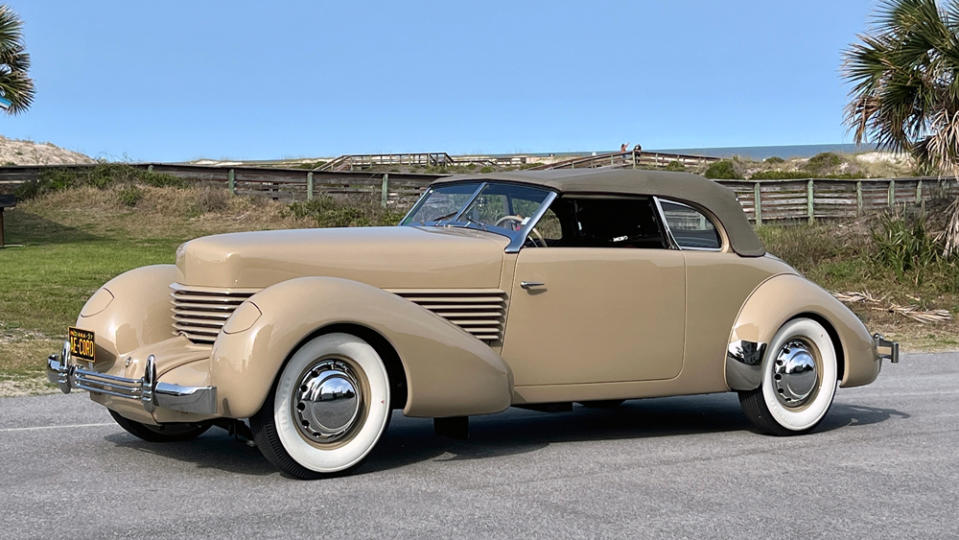
Earhart had custom ordered a gleaming example of one of the finest automobiles in the world at the time, taking delivery of the car on September 20, 1936. The Cord claimed enough technological innovations to impress one of the most iconoclastic women in modern history. The 812 Phaeton model incorporates hidden headlamps and a front-wheel-drive architecture inspired by another famous front-drive car: the Citroën Traction Avant. Powered by a 289 cubic-inch (4.7-liter) Lycoming V-8 engine, the square-nosed and heavily louvered machine projected an image of prosperity while incorporating numerous aviation-derived features.
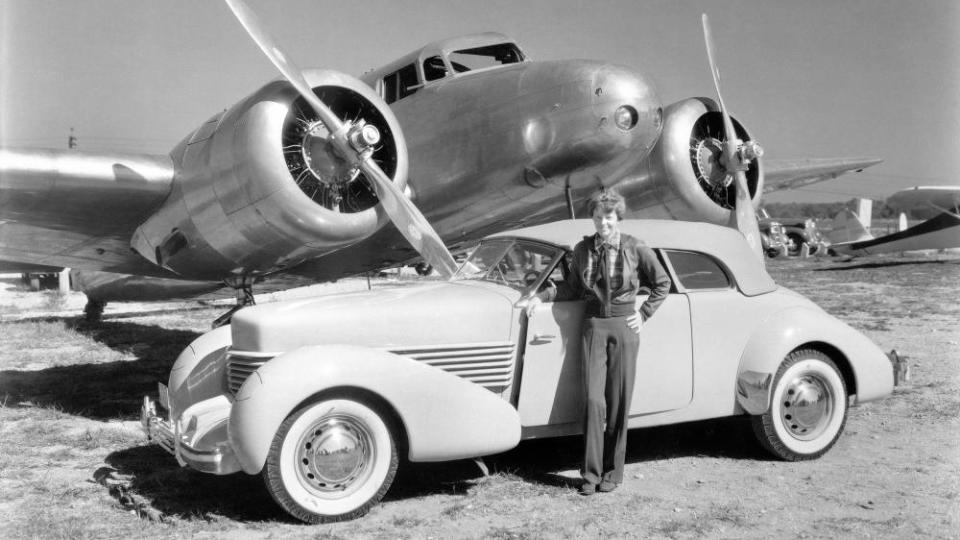
According to Jason Stoller of LaVine Restorations, Earhart must have changed her mind about the convertible’s top color. What was originally seen in a photograph as black was later captured as tan in another image taken at a Lockheed factory in Southern California. The pilot’s enthusiastic driving was also revealed via a large scuff on the front fender, a clue that would later help validate the authenticity of the body after components were separated and split into vehicles in California, Texas, and Montana.
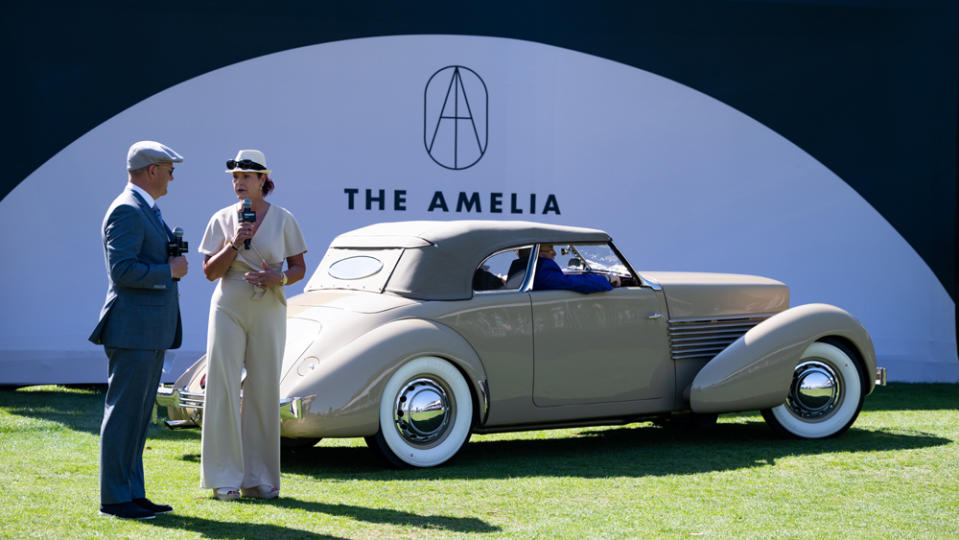
Stoller says that collector Ray Foster spent some 30 years reuniting the chassis, engine, and body of Earhart’s Cord after extensive research, and sold the parts in 2004 to Laura and Jack Boyd Smith Jr., founders of the JBS Collection. LaVine Restorations was commissioned to bring the Cord back to its original glory, and the vehicle has since earned numerous awards for the quality of the work done and the automobile’s overall importance.
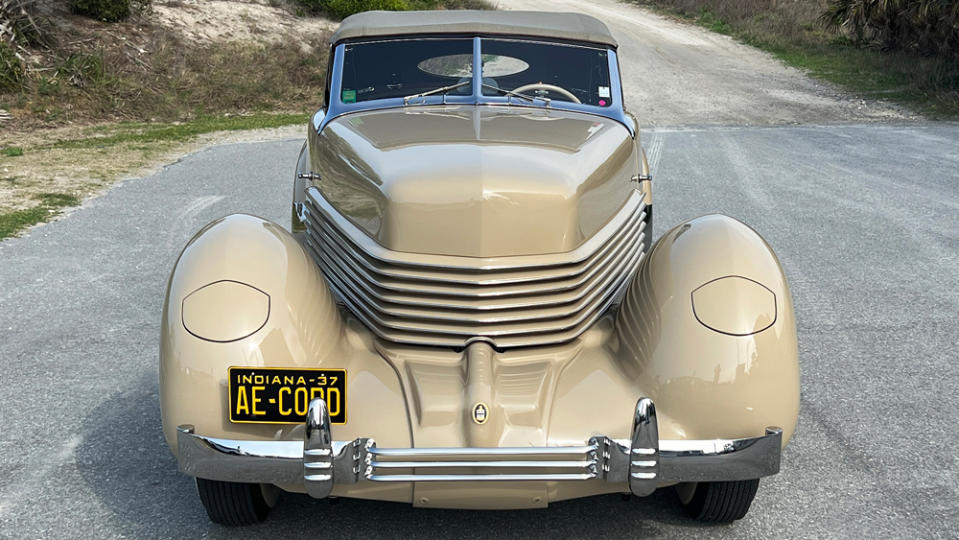
As was commonplace back in the day, the 1937 Cord was built to spec by its original owner, with several rare factory options distinguishing it, like a so-called “suicide knob” on the steering (to aid with quick turns), and a windshield-mounted compass. In a bit of mechanical irony, many of the components on Earhart’s aircraft were manufactured by Bendix, as were a few of the items on her Cord, including the brakes, clutch, and the electronic pre-selector for the transmission. In fact, Earhart commissioned a painting of the ill-fated Lockheed Electra at Bendix Field in South Bend, Ind.
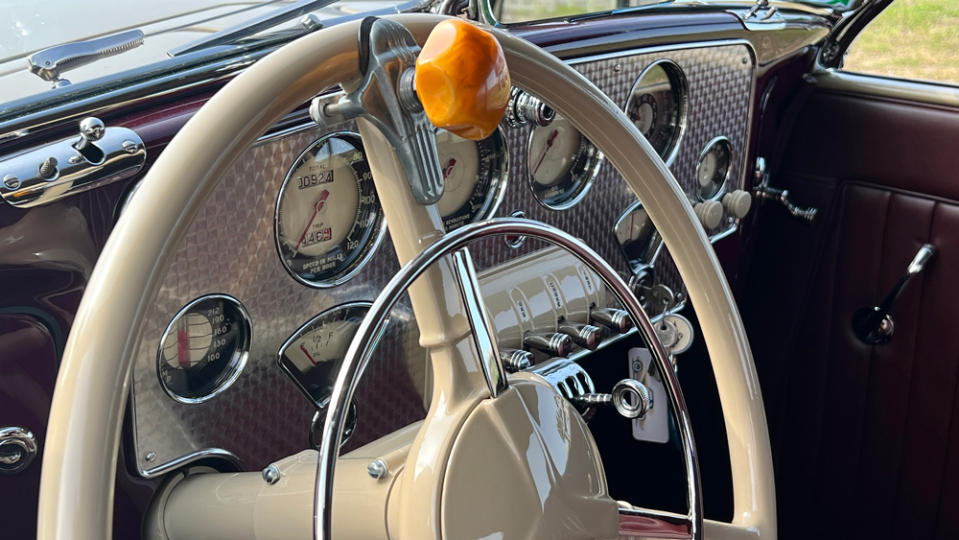
During the Amelia Concours d’Elegance this past weekend in Florida, we were fortunate enough to go for a spin in Earhart’s Cord on the small roads connecting the Ritz-Carlton, Amelia Island property. The suicide doors require a firm twist and an assertive shut, not unlike the doors of an airplane might. Once within the cabin, occupants are enveloped by instruments and materials worthy of the finest flying craft: the turned-metal dashboard is accented with chromed edges and shiny toggles, all exquisitely finished. With Stoller manning the controls, we set out for a drive in the long-wheelbase ragtop, sitting inches apart as the Cord’s 1930s dimensions make it narrower than one might expect.
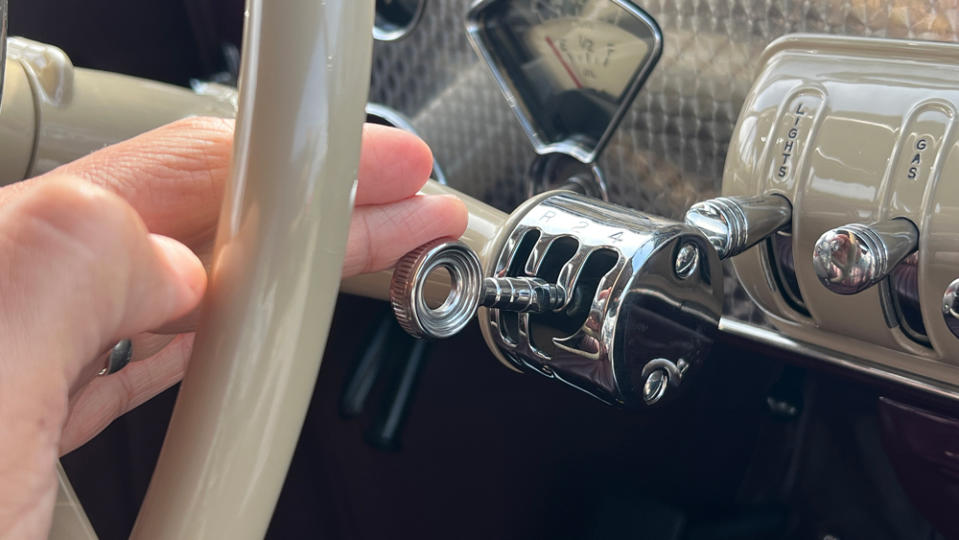
Rather than offer, say, the plushness of a Cadillac or the imposing presence of a Duesenberg, the Cord feels like a curious combination of stately and sporty. There’s a bit of sound and character from the V-8 (which seemed to be misfiring a bit, likely due to being cold). The drive requires a bit of technique, with a tiny gated shifter pre-selecting the gear changes, which do not occur until the clutch is actuated by foot. Our presence is grand, the Cord’s otherworldly proportions standing out against a sea of normal. With headlights utilizing re-tooled aircraft landing lights produced by the Stinson Air Company, the Cord 812 Phaeton has been described as a “kindred spirit” to Earhart’s vivacious character, a sort of vehicular avatar to her enterprising energy.
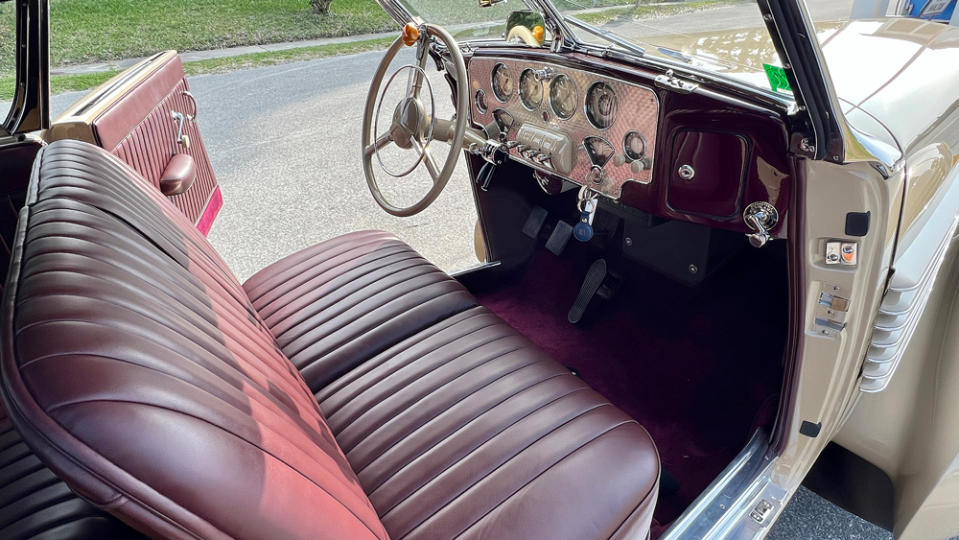
While the circumstances of her disappearance stir an air of mystery over Amelia Earhart’s larger-than-life legacy, her 1937 Cord 812 Phaeton Convertible offers tangible insights into one of history’s most intriguing women.
Click here for more photos of Amelia Earhart’s 1937 Cord 812 Phaeton Convertible.
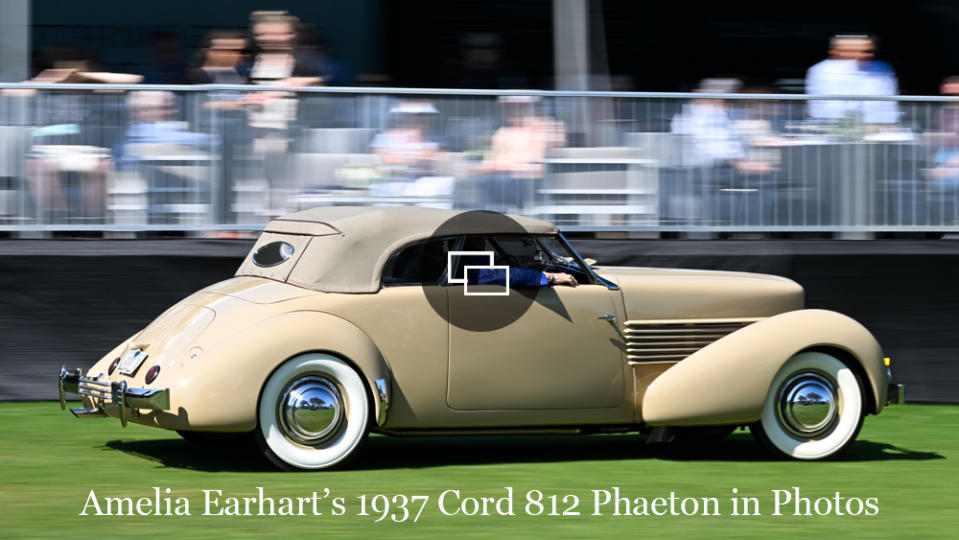
Best of Robb Report
The 2024 Chevy C8 Corvette: Everything We Know About the Powerful Mid-Engine Beast
The 15 Best Travel Trailers for Camping and Road-Tripping Adventures
Sign up for Robb Report's Newsletter. For the latest news, follow us on Facebook, Twitter, and Instagram.

